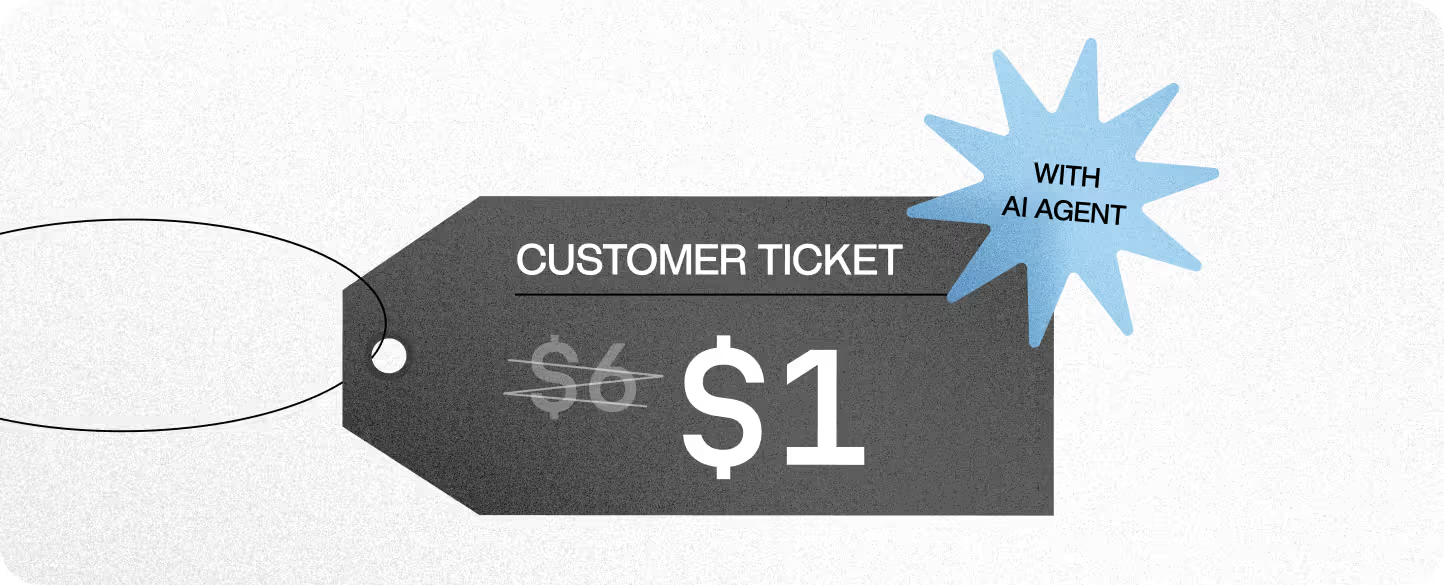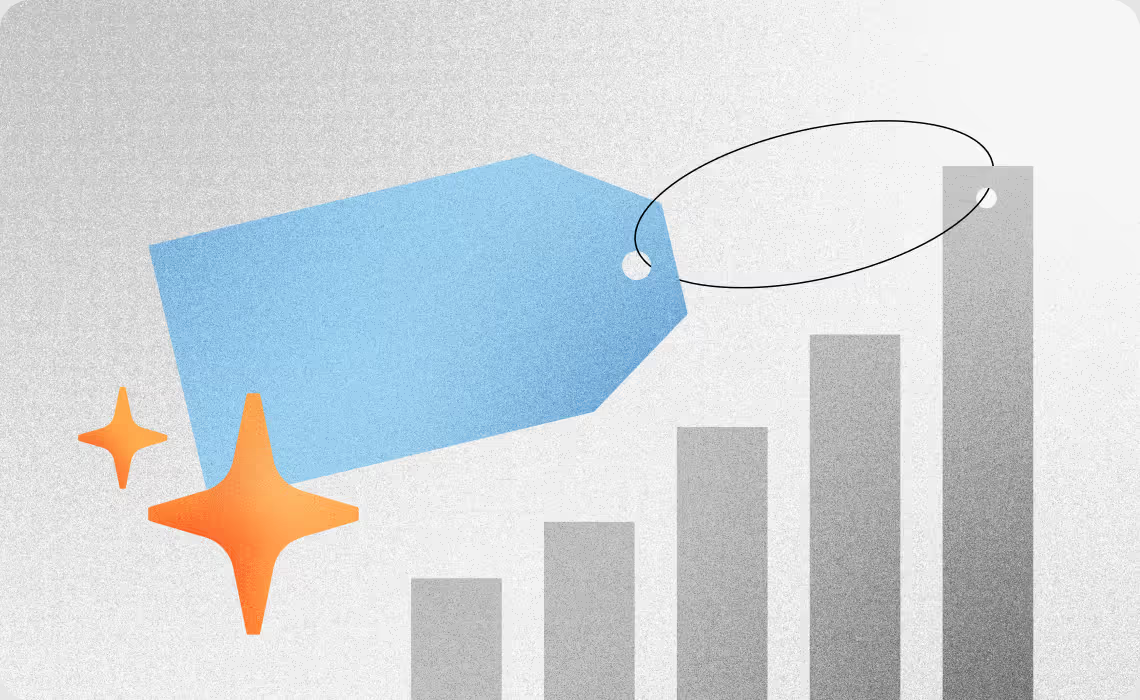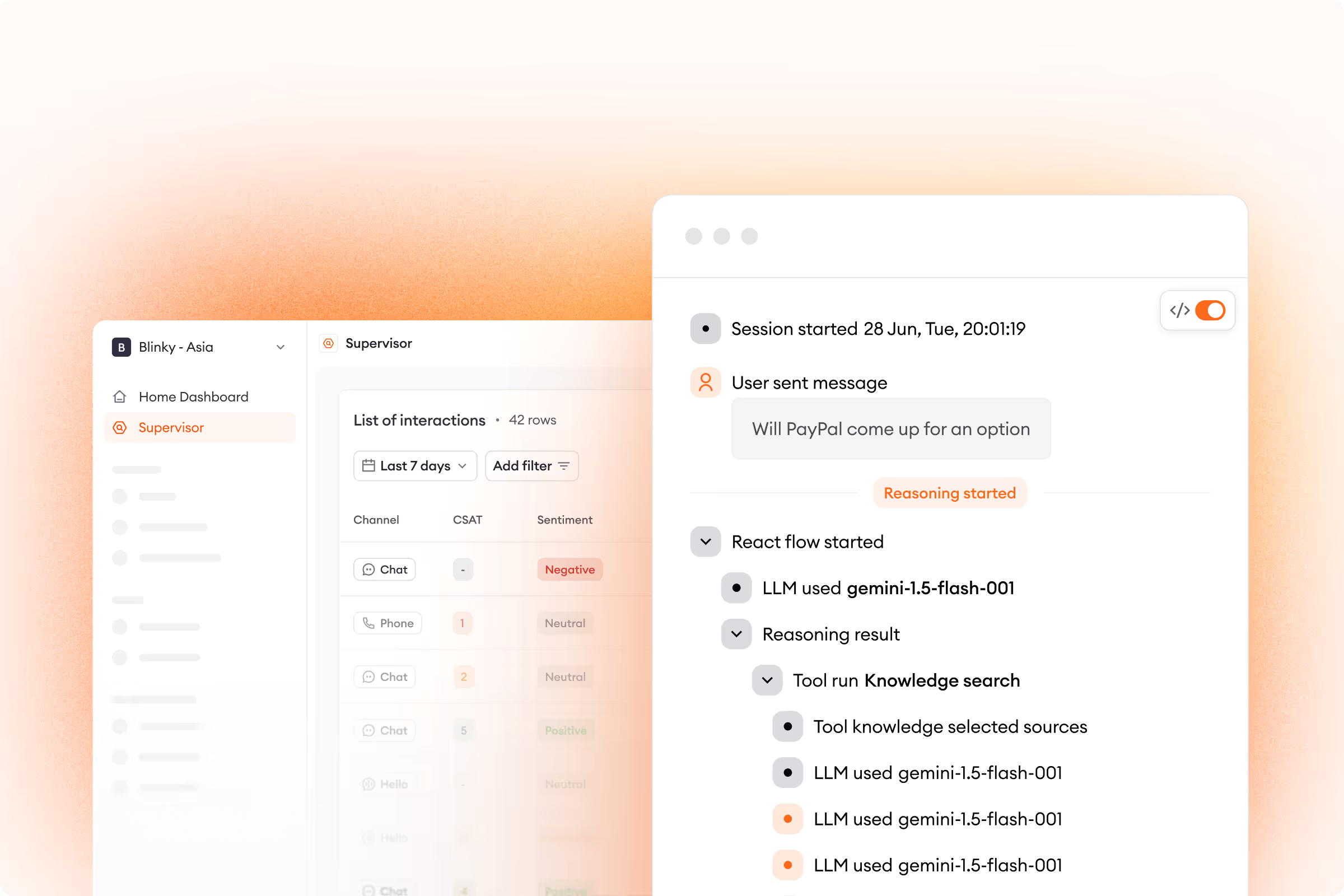How much of your hard-earned revenue makes it to your bottom line? If you’re thinking “not enough,” it’s time to change that.
For ecommerce businesses, a healthy margin is the most important marker of success. It’s the difference between reaping major growth or struggling to stay afloat.
With AI to help you optimize, customer service is the new area where you can trigger major margin gains. Here’s how to boost your bottom line.
TL;DR
- Net margin is a key indicator for e-commerce businesses – it’s your bottom-line.
- Margins get squeezed by all kinds of operational, marketing, and variable costs, like shipping, staffing, and supply chain disruptions.
- Traditional strategies like customer loyalty programs or outsourcing only help you make slow, incremental gains, and they’re complicated to implement and maintain.
- AI agents maximize your margins by helping you sell more without increasing your operational costs per ticket.
- In numbers: AOV goes up 22% with AI agents, while operating cost per CS ticket falls from $6 to $1. That equals better margins.
- It only takes two weeks to implement an AI agent into your customer service, so you don’t have to wait for the benefits to hit your bottom-line.
- Want to learn more? Keep reading!
Is net margin really that important? Yes, really.
CSAT. Revenue. CAC. Retention. The list goes on – there are dozens of metrics that ecommerce businesses need to track to get a full picture of their health and performance.
For each indicator, you probably have a tactical toolkit for improving that particular number and strengthening your business. That’s not a bad thing, but it’s easy to get caught up in all the KPIs.
There’s one metric that tells you how you’re really doing, and that’s net margin.
Strong revenue and amazing customer satisfaction are still important. But focusing on the details might mean you miss the bigger picture – and there are so many factors that can influence that picture.

Pain points in ecommerce that hurt your margins
Profit margins are wildly different across industries. Retail, coming in at under 5% on average, has some of the lowest net margins, with ecommerce coming out ahead of traditional brick-and-mortar retail.
Still, ecommerce businesses face tons of pain points and overhead costs that can hurt your profit margins. These show up in a few main areas:
Operational costs
These are the general expenses you have in order to keep your business up and running, like:
- Customer service: Staffing is a major expense, and quality customer service is a must for improving customer satisfaction so that shoppers keep coming back.
- High shipping costs: Shipping fees can eat into profits, especially if customers expect free or discounted shipping.
- Warehousing, inventory management, and logistics: Depending on your category, these expenses can really add up, especially if you’re trying to scale.
- Technology and maintenance: You don’t just need a website, you need tech to interact with your customers, track sales, and much more.
- Payment processing fees: Payment gateways and credit card companies can take a significant cut of sales revenue in fees.
Marketing costs
In the hyper-competitive ecommerce world, strong marketing is key to reaching and retaining customers. The costs include:
- Advertising spend: Paid ads on Facebook and Instagram can reach a large audience – with the price tag to match.
- Customer acquisition costs: The sky-high costs of attracting new ecommerce customers can outweigh the revenue they bring in.
Variable costs
Ecommerce is a fast-paced space, and there’s no such thing as business as usual. You probably encounter extra business costs from things like:
- Supply chain disruptions: Delays, shortages, and increased costs in the supply chain can impact your margins.
- Returns and refunds: Depending on your business, you might have high return rates and the costs of processing refunds and restocking.
- Competitive pricing: Intense competition can push businesses to lower prices, reducing profit margins.
- Fraud and chargebacks: Losses on fraudulent transactions and chargebacks can impact your bottom line.
- Discounts and promotions: Offering discounts and running promotions can boost short-term sales, but often at the expense of profit margins.
It’s tempting to zero in on your revenue as your main success metric. But with all of these costs creating drag on your business, the top-line doesn’t tell the whole story. That’s where margin comes in.
If your business is out of balance, net margin will be your metaphorical flashing “check engine” light.
When that warning light starts to flash, there are several strategies that most businesses try first in hopes of optimizing their margins.
Why standard strategies for improving margins are failing
For most businesses, there are go-to methods of achieving better margins. This involves influencing one or both sides of the margin equation: either generating more revenue or reducing operating costs.
The problem is that the improvement is incremental and time-consuming with these tactics. You end up squeezing out progress a percentage point at a time. Each 1% of better margin is harder to grow than the previous one.
On the revenue side, ecommerce businesses try familiar tactics like:
Launching new products
- Strategy: Attract new customers, give your marketing team something to promote, and boost average order value (AOV).
- Problem: R&D for new products is time-consuming and expensive, you still have to spend money on marketing, and you increase operational complexity.
Focusing on existing customers
- Strategy: Engage customers with loyalty programs, upselling features, and lifecycle marketing.
- Problem: It takes time and money to implement new programs and produce marketing campaigns, and it’s a toss-up whether all of this effort will ultimately be visible on your bottom line.
Raising prices
- Strategy: Sometimes it’s unavoidable, and charging more per product is an obvious way to increase top-line revenue.
- Problem: It’s unpopular with customers, you risk becoming uncompetitive, and you have to work harder to communicate the value of your products.
Meanwhile, on the operating side, many ecommerces might try:
Optimizing marketing
- Strategy: Lean more on organic marketing to reduce customer acquisition costs and overall spend.
- Problem: You can end up with fewer leads and sales, ultimately shrinking your revenue faster than you shrink your costs.
Using delivery contracts
- Strategy: Outsourcing or dropshipping to reduce overhead.
- Problem: Product and service quality could suffer, which drives away customers.
These strategies are proof-tested, so it makes sense that ecommerce businesses turn to them initially. But in today’s fast-paced market, these tactics are falling flat. The progress is too slow and resource-heavy, and margins just can't keep up with increasing costs.
Maximize your margins with AI for customer service
Customer service is the new area of your business where you can generate more margin using AI.
The benefits of implementing an AI agent for CS are multi-sided, too. Proactive chat drives more revenue while bringing down operating costs at the same time.
Say that your customer is looking at a specific product or category. An AI agent can proactively share suggestions and product advice. At checkout, AI can identify indecisive shoppers and catch them with some perfectly timed help before they abandon their cart – and that’s the kind of positive support interaction that boosts lead conversion by 18%
Loyal customers can get an automatic “welcome back” from an AI agent, including personalized recommendations. And for new leads, an AI agent can tailor the chat depending on what channel or ad brought them to your site.
This optimization goes straight to your margins. Here’s how it all adds up.
1. Cost Per Lead is Lower = Higher Margin
Shoppers want what they want, when they want it. With proactive chats, you can use AI to reach out to shoppers when it matters most and turn potential leads into loyal customers.
Customers are 18% more likely to convert when they have a positive interaction with ecommerce customer support. Plus, proactive chat lowers cart abandonment by 13%. Converting more customers means your cost per lead is lower, directly boosting your profit margins.
2. Higher Average Order Value = Higher Margin
Customer conversations are full of hidden opportunities to upsell, cross-sell, and close sales. An AI agent can pinpoint these chances and suggest the perfect items, personalized to each unique customer.
This accelerates revenue in two ways: AOV goes up by 22%, and there’s an 8% rise in lifetime customer value. When more customers keep coming back and spending more, you’ll see the lift in your profit margins.
3. Operating Cost Per Ticket Goes Down = Higher Margin
AI can work 24/7, so your CS team doesn’t have to. CS teams also get 1.5x more work done when they have AI support.
All of this brings down your operational costs per ticket from $6 to $1 on average when you add an AI agent. Lower costs mean higher margins, plain and simple.

4. More Customers at the Same Cost = Higher Margin
The natural scalability of AI lets you handle your growing customer base without increasing costs at the same rate. You can avoid both the spike in operating costs during peak seasons and the productivity lost on hiring and training new agents. And when you want to expand into new markets and even new languages, there’s no need to outsource your CS or spend on expanding your team upfront.
Remember that 18% boost in conversion rate with proactive chat? That higher rate applies to all of the new growth in your website traffic, too. Serving more customers without spending more means your margins grow as your business does.
Boost your bottom line with AI
Leveraging AI to optimize customer service isn't just smart – it's transformative. It’s the easiest way to generate higher margins for your business, and implementing an AI agent only takes 2 weeks.
With an AI agent doing the heaviest lifting in your CS department, businesses can see more of their top-line revenue hit their bottom line. Want to know how to do that in your ecommerce business? Let’s chat.
.avif)







